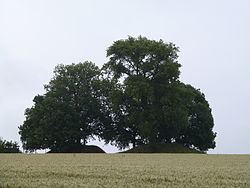1,800 2,000-3,000 Date 20 October 1465 | low 1,200 Result Burgundian victory | |
 | ||
Similar Battle of Othée, Siege of Oudenaarde, Second Utrecht Civil War, Revolt of Ghent, Battle of Gavere | ||
The Battle of Montenaken was fought between the forces of Liège and the Duchy of Burgundy on 20 October 1465 as part of the Second Liège War. Although outnumbered, the Burgundian force succeeded in routing the militia of Liège, inflicting heavy casualties.
Contents
Background
The War of the Public Weal between Louis XI and many of his senior nobles began in March 1465. As a consequence, the Duchy of Burgundy found itself at war with France. Louis, anxious to find allies, entered into talks with the city of Liège, which had historical grievances with Burgundy, leading to a military treaty in June 1465. With the major part of the Burgundian army, under Charles, Count of Charolais, engaged in France, the Liègois declared war on Burgundy on 28 August. Despite having most of his forces committed in France, the elderly Philip the Good, Duke of Burgundy rapidly assembled a force to defend his possessions against the attack of Liège.
The armies
The Liegois army, commanded by Raes de Lyntre, Lord of Heers was approximately 2-3000 strong, mostly infantry with some field artillery. The Burgundian force was about 1800 strong, mostly cavalry, not all of whom took part in the battle.
The battle
The Burgundian army, having confronted the Liège forces at Montenaken found themselves too weak to assault the defences. They therefore sent out raiders to burn the countryside in the hope of provoking the Liege troops to confront them. This was successful and a large Liege force, perhaps their whole army, met with a force of 3-500 Burgundian cavalry in open country. The Liege forces drew up between two tumuli, of which there are a number around Montenaken. The Burgundian cavalry charged but were beaten back by artillery fire. Regrouping, they charged again and were again beaten back. This time, however, their opponents pursued them. The Burgundians rallied again and charged a third time. The Liège army, out of its defensive position and disordered by pursuit was routed. 1200 men were estimated to have been killed in the battle and pursuit.
Aftermath
On 21 October, Louis XI wrote to Liège, informing the city he had made an independent peace with the Burgundians (the Treaty of Conflans), and advising them to do likewise before the main Burgundian army returned. This they did, signing the Treaty of Sint-Trond in December.
